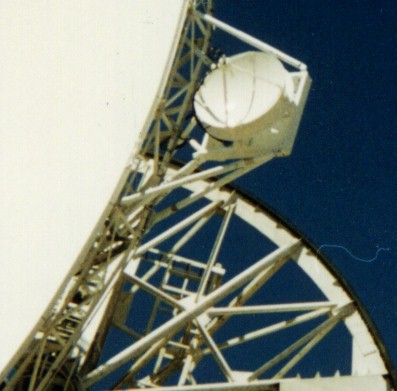
Peru RPCV Hugh Pickens was AlliedSignal Project Manager on JPL's X-Band Acquisition Aid Project
ATSC designs and builds X-Band Acquisition Aid for JPL
The X-Band Acquisition Aid (XAA) was designed for the Jet Propulsion Laboratory for initial acquisition and tracking of deep space spacecraft using an X-Band beacon. The XAA successfuly acquired the NEAR (Near Earth Asteroid Rendezvous), MGS (Mars Global Surveyor), MPF (Mars Pathfinder), and Cassini spacecraft. After acquisition, the XAA passes the look angles to the JPL 34m or 70m antenna for TT and C The XAA is mounted on the rim of the 26m antennas at Canberra and Goldstone Deep Space Communications Complexes.
The XAA consists of a 4ft antenna reflector, an all waveguide 4-horn monopulse tracking feed, LNAÕs, and up and down converters. The broad beamwidth of the antenna makes it ideal for signal acquisition. The XAA uses the existing 26m servo system which has a faster angular velocity than the 34m for the high velocity launch of a spacecraft. The design provides right hand or left hand circular polarization. The feed is a three channel monopulse producing a sum, X error and Y error channel which are used to position the antenna toward the received signal. The system receives the X-Band beacon in the 8.2 GHz to 8.5 GHz frequency range which is amplified, downconverted to IF and transferred to the multifunction (tracking, telemetry and ranging) receivers in the tracking station operations building.
The multifunction receivers generate the error voltages which control the drive system of the 26m antenna, enabling it to autotrack the spacecraft. The tracking parameters from the XAA are supplied to the 34m or 70m systems via the Tracking Data Interface. The XAA is designed to acquire spacecraft at elevations down to 10.5 degrees above the horizon and at ranges up to 37,000 km.
Return to Projects Page here.
